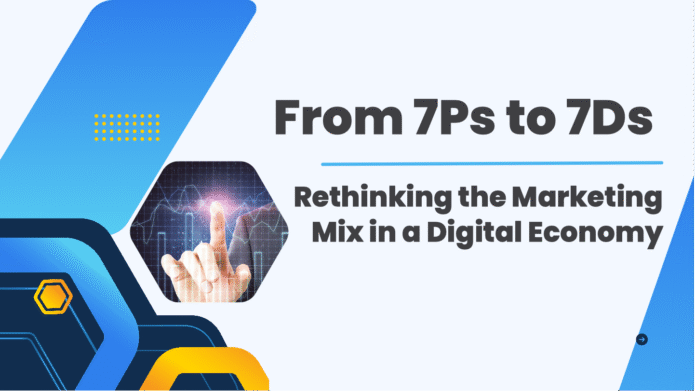For decades, the 7Ps of marketing, Product, Price, Place, Promotion, People, Process, and Physical Evidence, served as a reliable blueprint for crafting business strategies across industries. But as the digital economy matures and customer expectations evolve, these traditional elements no longer operate in isolation or in the same form. In boardrooms and C-suites around the world, senior executives are finding themselves having to realign familiar concepts with the realities of algorithm-driven platforms, remote experiences, and AI-fueled personalization. The shift is not just about tools or technology. It’s about reimagining the very way value is created and delivered. And this is where the conversation around the 7Ds of digital marketing begins to gain traction.
In today’s economy, customer journeys are fragmented across devices and channels. The distinction between digital and physical is increasingly blurred. This environment has given rise to a digital-first framework where companies are encouraged to think in terms of Discovery, Data, Design, Distribution, Dialogue, Dynamics, and Delivery. These 7Ds are not a replacement for the 7Ps, but rather a strategic evolution. They provide senior leaders with a more agile lens through which to view customer engagement and organizational adaptability. In particular, three areas, Place, Promotion, and People, are undergoing the most profound transformations in virtual ecosystems.
Traditionally, Place referred to physical locations where products were sold or services were rendered. In the digital economy, Place is now about presence. A brand’s visibility across social platforms, marketplaces, websites, and search engines becomes the new storefront. For digital-native businesses, distribution no longer depends on geography but on access, bandwidth, and smart logistics. What this means for executives is that Place strategy is no longer owned by retail managers but requires collaboration between marketing, IT, and supply chain teams. The decision of where to “place” your product must now account for search algorithms, user experience, and cross-platform consistency. It’s not just about where your product is, but how seamlessly a customer can find it, engage with it, and act upon it.
Promotion, once synonymous with mass advertising, has become far more nuanced and conversational. Static campaigns are being replaced by dynamic, real-time engagement that responds to user behavior. The rise of content creators, influencers, and peer reviews has shifted the balance of power from the marketer to the market itself. Senior leaders now need to think about Promotion as Dialogue. It’s not enough to push a message out. The message must be context-aware, personalized, and invite interaction. Marketing in the digital age is no longer just about capturing attention. It’s about earning trust in micro-moments of decision-making. This requires investment not only in media but in analytics and creativity. The alignment between data science and storytelling is becoming a defining factor in brand success.
People, long considered the most unpredictable variable in the marketing mix, are today more connected, informed, and empowered than ever before. Employees, customers, and communities all act as co-creators of brand value. In a digital environment, People are both audience and amplifier. Internal culture becomes external reputation within seconds, and customer service is a public performance. For C-level leaders, this redefines talent strategy. Building digitally fluent teams, investing in upskilling, and embedding brand values into employee engagement are now key business imperatives. Leadership itself becomes a marketing act. Transparency, responsiveness, and authenticity are not soft skills anymore. They are competitive differentiators.
The shift from Ps to Ds is not a theoretical exercise. It’s being lived and tested in real time by companies that either adapt or fall behind. We see digital-first companies like Shopify, Canva, and Zoom moving at a velocity that traditional players struggle to match, not because they abandon the fundamentals, but because they rewire them. They treat data as currency, design as strategy, and customer interaction as a living, evolving relationship.
For senior management, the message is clear. Marketing is no longer a function at the edge of operations. It is a central force that connects strategy, culture, technology, and customer experience. The 7Ds offer a modern language for this integration, one that resonates with the pace and complexity of digital business. Moving from the 7Ps to the 7Ds is not about chasing trends. It is about building a mindset that is adaptive, customer-centric, and insight-driven.
The digital economy rewards clarity, speed, and empathy. Senior leaders who recognize the depth of this shift are not just rethinking their marketing plans. They are rethinking their organizations. And in that rethinking lies the opportunity to lead.




